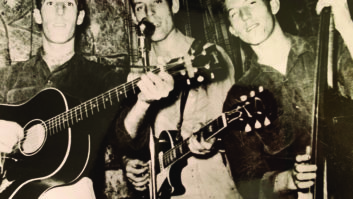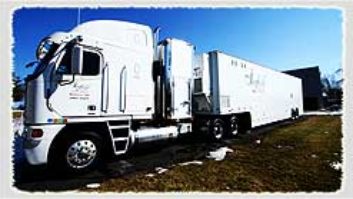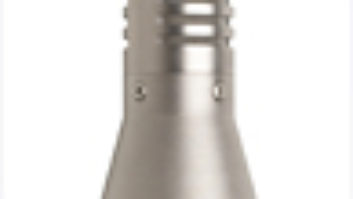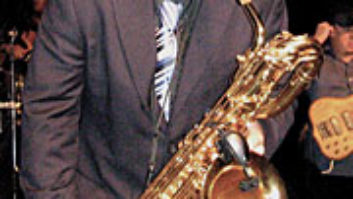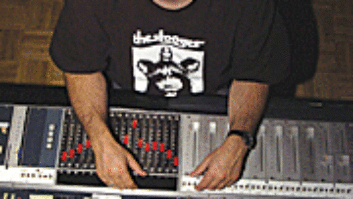This month, “Bitstream” celebrates its 2nd anniversary…Thank you, thank you very much…and, to placate you loyal readers, I’m revisiting a subject covered back in October and November of 2000: If any of you have purchased a computer of any kind lately, it has surely come equipped with one or both of the now commonplace local buses, USB and 1394. These standards are evolving as I predicted, and will subtly but profoundly impact audio professionals in the next 12 to 18 months.
If that computer came in a bovine box, you’ve probably come to realize that consumer-oriented computers of the beige variety typically have all the legacy spigots but only an Unused Serial Bus connection to herald that they were designed sometime after the fall of Rome. More pro-oriented models configured for A/V production have a beefier I/O solution, the first generation of 1394, also known as FireWire, also known as i.Link™, also known as mLan™, also known as “that bitsy connector on my DV cam…”
WHY FIREWIRE?
IEEE 1394 is a peer-to-peer protocol that runs over a variety of PHY or physical layer choices, including shielded or unshielded twisted pair for short runs and glass or plastic fiber for long hauls. It boasts great data security features and, helping to keep costs down, is widely used in the consumer space. In short: smarter, faster, more versatile and, yes, more attractive than USB.
The most visible manifestation of FireWire to date is the very successful incorporation of the technology in consumer electronics (CE), where it’s seeing competition from the Digital Video Interface or DVI standard. Cahners In-Stat Group claims that, in 2000, over 35 million PC-based and CE products were equipped with 1394, and the high-tech market research firm projects that the number will exceed 200 million by 2005. By the way, 1394-equipped consumer product shipments were expected to overtake PC devices last year. This augers well for continued price erosion for 1394 hard- and firmware, making it increasingly attractive for inclusion by vendors.
The 1394b, or “beta” spec, boosts FireWire’s data rate from 400 to 1,600 Mbits/second, with future improvements to 3,200 Mbps. Though that handily eclipses the more pedestrian USB 2.0, it’s unfortunate that beta hardware is as rare as a bivalve Pokemon. By the way, the revised, second-generation spec has a “b” appended to its name and is refered to as “beta” — as in second in the line, not beta as in still-in-development.
As the supply chain slowly fills in 2002 with next-gen FireWire, wired and wireless networking products like Unibrain’s cross-platform FireNet will begin to show off that 800Mbps speed advantage. For A/V distribution, the beta spec defines data transmission at 400 Mbps over POF (Plastic Optical Fiber), or at 100 Mbps over Cat5 UTP up to 100 meters. Omneon Systems has long been an advocate of networking for professionals over 1394, because it can isochronously carry audio and video while simultaneously moving asynchronous data. Home-networking products based on 1394 will join the fray and start appearing at local discount stores. These commodity wares will fit comfortably into any wallet-bearing life form’s arsenal of tech solutions. FireWire-attached storage is the most used version of 1394 in our audio world at present. The aforementioned Unibrain joins Archos, CD Cyclone, EZQuest, FireWire Direct, Glyph Technologies, LaCie, Micronet, Maxtor, QPS, PowerFile, Rorke, SmartDisk, Western Digital and others in offering disk and disk-based storage solutions. Western Digital, tapping into FireWire’s innate intelligence, demo’d a novel stand-alone 1394 A/V drive that can simultaneously play and record in either asynchronous or isochronous mode. Focus Enhancements’ FireStor is a smart, relatively inexpensive little solution to a bunch of video predicaments one often faces. Unibrains FireNAS (I’m sensing a trend in these naming choices…), though not as capacious as Micronets SANcube X-stream, does provide 1394 and 100/1000BaseT Ethernet connectivity. As for tape, DAT, ADR and, better still, VXA drives are all available in 1394-attached, external configurations.
Steering back ’round to consumer land for a moment, many of us who deal with advanced distribution formats long for a clean, easy, digital way to ship audio out of SACD and DVD-A player mechanisms so we can use our own fave brand of D/A conversion. A lack of standards in the CE arena has darkened this vision so far, though 1394 supports strong 5C encryption, and 1394 spigots, though not operational, began to appear in DVD-A transports this past year. A need for continued differentiation in the marketplace should hasten the appearance of 1394-equipped DVD-A boxes.
PRO AUDIO? STILL WAITING
Alas, FireWire for pro audio is still in its infancy and false starts abound. Crest Audio, in conjunction with the now-defunct Digital Harmony, hatched the pioneering FB-88, a “state-of-the-art 8×8 1394 audio interface and the first to bridge the popular ADAT optical interface to the 1394 bus.” Great, but the FB-88 never made it to the market. The M-Audio division of Midiman also worked with Digital Harmony to create 1394 products, but nothing there escaped the lab either. The wire wonks at Monster Cable worked on a 1394 digital audio gateway but, when asked, disavowed any knowledge of its existence.
Still, some progress has been made… This time last year, Swissonic announced an mLAN interface option for the AD-8. mLan is a proposed amendment to the 1394 spec that adds isochronous MIDI data to the protocol. Of course, Yamaha has its own batch of mLan gear (including an interface for the 02R — check it out). Even better, the amphetamine-fueled elves at MOTU have gotten farther, producing the single-rackspace, cross-platform 828. This low-cost alternative to multichannel sound cards and built-in hardware competes with the plethora of USB offerings and has all the features an ADAT-abusing project studio would need. At press time, MOTU was getting ready to release another crowd pleaser, the 896. This 96kHz FireWire audio interface has eight channels of 24-bit analog I/O, eight channels of Lightpipe I/O, eight built-in mic pre’s, AES/EBU digital I/O, wordclock and ADAT sync.
Metric Halo’s bus-powered Mobile I/O is another solution to both the stationary and portable studio dilemma, adding some significant features to what’s available from Midiman. Built like a tank, it promises sophisticated software control over power management, analog level control of input, output and monitoring with 50 dB of gain, plus padding on input. The clock is fully internalized, but WS and superclock I/O are available if you don’t want internal or external lock to incoming AES. Low-jitter AD/DA conversion up to 96 kHz adds to the quality slant. An embedded DSP acts as a traffic cop while performing mixing, monitoring and metering duties. Plus, an optional second DSP will provide addressable signal processing (think built-in Channel Strip). The DSPs also offload computational tasks from bogging the host and enable the capability to operate in stand-alone mode, so direct 1394 storage support and UI is in store. Though currently shipping models are Mac-only, WDM drivers (Windows Drivers Model) are also in the works.
For those of the Redmond persuasion, OS support for 1394 is looking up. Microsoft has shifted its emphasis away from USB, so XP improves on the already decent support for 1394 found in W2k. Apple, for its part, continues to refine driver architecture in X. With Final Cut and DVD Studio Pro now OS X native, there’s some real pull for adoption by creatives of the new OS version.
WHERE’S IT HEADED?
Not all of FireWire is sweetness and light. As with most standards, the IEEE 1394 specification for audio is unfortunately so broad that there are numerous ways to accomplish any particular function. To make matters worse, FireWire audio interfaces often have to contend with ASIO, in all its geeky glory. In addition, while stereo audio carriage over 1394 is a no-brainer, multichannel transport is a whole other matter and requires some serious brain baking to control jitter and interchannel delays.
So, while CE support for FireWire is a speeding juggernaut, the audio community is, not surprisingly, slow to follow. I prefer to think of it as conservative practicality; with such a small market, audio vendors can’t afford any missteps.
OMas ([email protected]) waves good-bye to the business slump and looks forward to some snowshoeing before the thaw. This column was created while under the influence of Arvo Pärt’s Trivium and Simon & Garfunkel’s Bridge Over Troubled Water. For pertinent links and back issues on 1394 basics and FireWire interoperability, go towww.seneschal.net.
